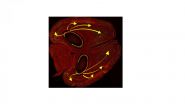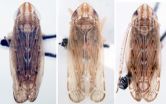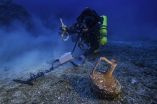Penn Medicine's 'sepsis sniffer' generates faster sepsis care and suggests reduced mortality
Early identification and intervention lead to better results for hospital inpatients
2014-10-09
(Press-News.org) PHILADELPHIA - An automated early warning and response system for sepsis developed by Penn Medicine experts has resulted in a marked increase in sepsis identification and care, transfer to the ICU, and an indication of fewer deaths due to sepsis. A study assessing the tool is published online in the Journal of Hospital Medicine.
Sepsis is a potentially life-threatening complication of an infection; it can severely impair the body's organs, causing them to fail. There are as many as three million cases of severe sepsis and 750,000 resulting deaths in the United States annually. Early detection and treatment, typically with antibiotics and intravenous fluids, is critical for survival.
The Penn prediction tool, dubbed the "sepsis sniffer," uses laboratory and vital-sign data (such as body temperature, heart rate, and blood pressure) in the electronic health record of hospital inpatients to identify those at risk for sepsis. When certain data thresholds are detected, the system automatically sends an electronic communication to physicians, nurses, and other members of a rapid response team who quickly perform a bedside evaluation and take action to stabilize or transfer the patient to the intensive care unit if warranted.
The study developed the prediction tool using 4,575 patients admitted to the University of Pennsylvania Health System (UPHS) in October 2011. The study then validated the tool during a pre-implementation period from June to September 2012, when data on admitted patients was evaluated and alerts triggered in a database, but no notifications were sent to providers on the ground. Outcomes in that control period were then compared to a post-implementation period from June to September 2013. The total number of patients included in the pre and post periods was 31,093.
In both the pre- and post-implementation periods, four percent of patient visits triggered the alert. Analysis revealed 90 percent of those patients received bedside evaluations by the care team within 30 minutes of the alert being issued. In addition, the researchers found that the tool resulted in:
A two to three-fold increase in orders for tests that could help identify the presence of sepsis
A 1.5 to two-fold increase in the administration of antibiotics and intravenous fluids
An increase of more than 50 percent in the proportion of patients quickly transferred to the ICU
A 50 percent increase in documentation of sepsis in the patients' electronic health record
The study found a lower death rate from sepsis and an increase in the number of patients successfully discharged home, although these findings did not reach statistical significance.
"Our study is the first we're aware of that was implemented throughout a multihospital health system," said lead author Craig A. Umscheid, MD, MSCE, director of Penn's Center for Evidence-based Practice. "Previous studies that have examined the impact of sepsis prediction tools at other institutions have only taken place on a limited number of inpatient wards. The varied patient populations, clinical staffing, practice models, and practice cultures across our health system increases the generalizability of our findings to other health care settings."
Umscheid also noted that the tool could help triage patients for suitability of ICU transfer. "By better identifying those with sepsis requiring advanced care, the tool can help screen out patients not needing the inevitably limited number of ICU beds."
INFORMATION:
In addition to Umscheid, the other Penn co-authors are Joel Betesh, MD; Christine Vanzandbergen, PA, MPH; Asaf Hanish, MPH; Gordon Tait, BS; Mark E. Mikkelsen, MD, MSCE; Benjamin French, PhD; and Barry D. Fuchs, MD, MS.
Dr. Umscheid's contribution to this project was supported in part by the National Institutes of Health, National Center for Advancing Translational Sciences, grant # UL1TR000003.
Penn Medicine is one of the world's leading academic medical centers, dedicated to the related missions of medical education, biomedical research, and excellence in patient care. Penn Medicine consists of the Raymond and Ruth Perelman School of Medicine at the University of Pennsylvania (founded in 1765 as the nation's first medical school) and the University of Pennsylvania Health System, which together form a $4.3 billion enterprise.
The Perelman School of Medicine has been ranked among the top five medical schools in the United States for the past 17 years, according to U.S. News & World Report's survey of research-oriented medical schools. The School is consistently among the nation's top recipients of funding from the National Institutes of Health, with $392 million awarded in the 2013 fiscal year.
The University of Pennsylvania Health System's patient care facilities include: The Hospital of the University of Pennsylvania -- recognized as one of the nation's top "Honor Roll" hospitals by U.S. News & World Report; Penn Presbyterian Medical Center; Chester County Hospital; Penn Wissahickon Hospice; and Pennsylvania Hospital -- the nation's first hospital, founded in 1751. Additional affiliated inpatient care facilities and services throughout the Philadelphia region include Chestnut Hill Hospital and Good Shepherd Penn Partners, a partnership between Good Shepherd Rehabilitation Network and Penn Medicine.
Penn Medicine is committed to improving lives and health through a variety of community-based programs and activities. In fiscal year 2013, Penn Medicine provided $814 million to benefit our community.
[Attachments] See images for this press release:

ELSE PRESS RELEASES FROM THIS DATE:
2014-10-09
Just look into the light: not quite, but researchers at the UC Davis Center for Neuroscience and Department of Psychology have used light to erase specific memories in mice, and proved a basic theory of how different parts of the brain work together to retrieve episodic memories.
Optogenetics, pioneered by Karl Diesseroth at Stanford University, is a new technique for manipulating and studying nerve cells using light. The techniques of optogenetics are rapidly becoming the standard method for investigating brain function.
Kazumasa Tanaka, Brian Wiltgen and colleagues ...
2014-10-09
ANN ARBOR—An unexpectedly high amount of the climate-changing gas methane, the main component of natural gas, is escaping from the Four Corners region in the U.S. Southwest, according to a new study by the University of Michigan and NASA.
The researchers mapped satellite data to uncover the nation's largest methane signal seen from space. They measured levels of the gas emitted from all sources, and found more than half a teragram per year coming from the area where Arizona, New Mexico, Colorado and Utah meet. That's about as much methane as the entire coal, oil, ...
2014-10-09
An international research team comprised of German, Israeli and American ecologists, including Dr. Claus Holzapfel, Dept. of Biological Sciences, Rutgers University-Newark, has conducted unique long-term experiments in Israel to test predictions of climate change, and has concluded that plant communities in the Holy Land can cope with climate change of "biblical" dimensions. Their findings appear in the current issue of Nature Communications at http://www.nature.com/ncomms/2014/141006/ncomms6102/pdf/ncomms6102.pdf.
When taking global climate change into account, many ...
2014-10-09
A team of scientists using NASA's Hubble Space Telescope has made the most detailed global map yet of the glow from a turbulent planet outside our solar system, revealing its secrets of air temperatures and water vapor.
Hubble observations show the exoplanet, called WASP-43b, is no place to call home. It is a world of extremes, where seething winds howl at the speed of sound from a 3,000-degree-Fahrenheit "day" side, hot enough to melt steel, to a pitch-black "night" side with plunging temperatures below 1,000 degrees Fahrenheit.
Astronomers have mapped the temperatures ...
2014-10-09
Researchers at the Wyss Institute for Biologically Inspired Engineering at Harvard University have unveiled a new method to form tiny 3D metal nanoparticles in prescribed shapes and dimensions using DNA, Nature's building block, as a construction mold.
The ability to mold inorganic nanoparticles out of materials such as gold and silver in precisely designed 3D shapes is a significant breakthrough that has the potential to advance laser technology, microscopy, solar cells, electronics, environmental testing, disease detection and more.
"We built tiny foundries made ...
2014-10-09
MADISON, Wis. – In Wisconsin, bioenergy is for the birds. Really.
In a study published today in the journal PLOS ONE, University of Wisconsin-Madison and Wisconsin Department of Natural Resources (DNR) scientists examined whether corn and perennial grassland fields in southern Wisconsin could provide both biomass for bioenergy production and bountiful bird habitat.
The research team found that where there are grasslands, there are birds. Grass-and-wildflower-dominated fields supported more than three times as many bird species as cornfields, including 10 imperiled ...
2014-10-09
Three new species of leafhoppers from China in the genus Futasujinus were recently identified during a review of leafhoppers in museum collections in China, the UK, and Illinois. One of them, Futasujinus dietrichi, was "named after Dr. Chris Dietrich, University of Illinois, USA, in recognition of his good work on leafhoppers." The new species are described in an article in Annals of the Entomological Society of America.
The other two species are Futasujinus truncatus and Futasujinus hastatus. Both species epithets allude to processes on their aedeagal shafts.
All three ...
2014-10-09
Tempe, Ariz. (Oct. 9, 2014) - New Ebola research demonstrates that quick and forceful implementation of control interventions are necessary to control outbreaks and avoid far worse scenarios.
Researchers analyzed up-to-date epidemiological data of Ebola cases in Nigeria as of Oct. 1, 2014, in order to estimate the case fatality rate, proportion of health care workers infected, transmission progression and impact of control interventions on the size of the epidemic.
"Rapid and forceful control measures are necessary as is demonstrated by the Nigerian success story. This ...
2014-10-09
A Greek and international team of divers and archaeologists has retrieved stunning new finds from an ancient Greek ship that sank more than 2,000 years ago off the remote island of Antikythera. The rescued antiquities include tableware, ship components, and a giant bronze spear that would have belonged to a life-sized warrior statue.
The Antikythera wreck was first discovered in 1900 by sponge divers who were blown off course by a storm. They subsequently recovered a spectacular haul of ancient treasure including bronze and marble statues, jewellery, furniture, luxury ...
2014-10-09
WEST LAFAYETTE, Ind. – A new technique makes it possible to quickly detect the presence of drugs or to monitor certain medical conditions using only a single drop of blood or urine, representing a potential tool for clinicians and law enforcement.
The technique works by extracting minute quantities of target molecules contained in specimens of blood, urine or other biological fluids, and then testing the sample with a mass spectrometer.
Testing carried out with the technology takes minutes, whereas conventional laboratory methods take hours or days to yield results ...
LAST 30 PRESS RELEASES:
[Press-News.org] Penn Medicine's 'sepsis sniffer' generates faster sepsis care and suggests reduced mortality
Early identification and intervention lead to better results for hospital inpatients





